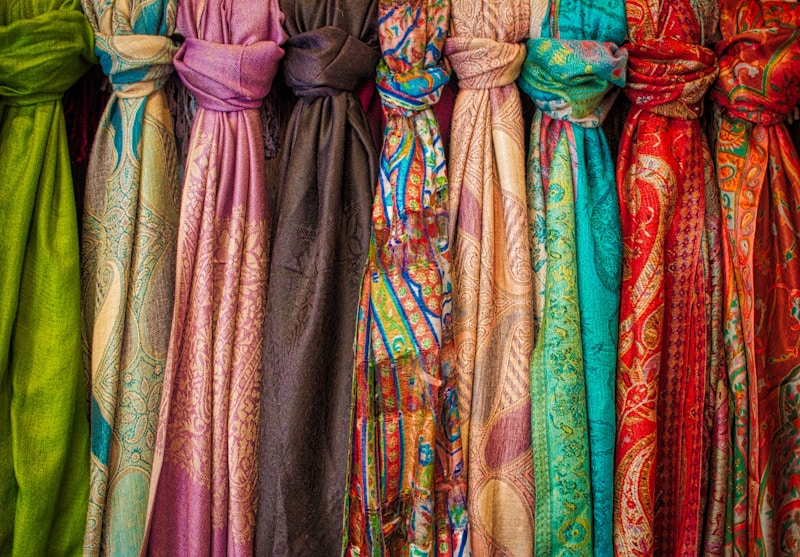Estimating Expenses for a Custom Gown: A Comprehensive Guide
Estimating Expenses for a Custom Gown: A Comprehensive Guide
Choosing to invest in a custom gown is a significant decision that comes with various factors to consider. From design choices to fabric selections, understanding the costs involved is essential to prevent budget overruns. In this article, we will delve into estimating expenses for a custom gown, breaking down the various components and offering valuable insights for brides, prom-goers, and anyone looking to make a personalized fashion statement.
Understanding the Custom Gown Process
Before diving into cost estimation, it's crucial to grasp the custom gown process. This typically involves several key steps, including:
- Initial Consultation: Discussing ideas, inspirations, and budget with the designer.
- Design Creation: The designer sketches a one-of-a-kind gown tailored to your specifications.
- Fabric Selection: Choosing the right fabric enhances the gown's overall look and feel.
- Fittings: Multiple fitting sessions ensure perfect tailoring and adjustments.
- Final Touches: Adding embellishments, accessories, and last-minute adjustments.
Components of Custom Gown Expenses
When estimating expenses for a custom gown, consider breaking down costs into specific components:
| Component | Estimated Cost (USD) |
| Designer Fees | $500 - $3,000 |
| Fabric Costs | $100 - $1,500 |
| Accessory Costs | $50 - $500 |
| Fitting Sessions | $100 - $300 |
| Alterations | $50 - $300 |
| Shipping (if necessary) | $20 - $150 |
1. Designer Fees
The primary expense in creating a custom gown is usually the designer's fee, which can range widely based on their experience, reputation, and location. For instance, well-known designers in metropolitan areas may charge higher fees compared to local tailors. Always inquire about the designer's portfolio and past work to ensure quality.
2. Fabric Costs
The choice of fabric not only affects the visual appeal but also the overall cost. Luxurious fabrics such as silk or lace come with a higher price tag compared to cotton or polyester blends. Additionally, consider the amount of fabric required based on the gown's style—more elaborate designs will require more material.

3. Accessory Costs
Many custom gowns are elevated with accessories, including veils, belts, or jewelry. These additions can contribute significantly to the overall price. When budgeting, think about the accessories you'd like to include as part of your ensemble.
4. Fitting Sessions
Clothing needs to fit perfectly, especially for a custom gown. This requires several fitting sessions with your designer. Depending on your location and chosen designer, each session can cost anywhere from $100 to $300. It's essential to communicate openly during fittings to ensure every detail meets your expectations.
5. Alterations
Even after fittings, some minor adjustments may be necessary. Alterations add extra costs, typically around $50 to $300 depending on the complexity of the changes required. Discuss any specific preferences with your designer to minimize last-minute adjustments.
6. Shipping Costs
If you are ordering fabrics or the gown itself from different locations, shipping costs can add up. Always factor in potential shipping expenses when budgeting. It's wise to confirm the shipping costs upfront to avoid surprises.
Tips for Budgeting Your Custom Gown
To keep your custom gown expenses in check, consider the following tips:
- Set a Realistic Budget: Determine your budget early in the planning process and stick to it as closely as possible.
- Communicate Openly with Designers: Ensure that your designer understands your budget and can provide guidance on what options are possible within your price range.
- Research Alternatives: Don’t hesitate to explore different designers, materials, and styles that may suit your taste and budget.
- Prioritize Key Elements: Identify what's most important to you: fabric quality, unique design, or specific embellishments. Allocate more funds to priorities while maintaining balance.
Common Questions About Custom Gown Costs
As you navigate the world of custom gowns, here are some frequently asked questions that could guide your planning:
- How long does it take to create a custom gown? Typically, designing and creating a custom gown can take anywhere from three to six months, depending on the designer’s workload and your specific requests.
- Can I find budget-friendly custom gown options? Yes, some emerging designers offer quality craftsmanship at lower prices. It’s worthwhile to explore different avenues and get quotes from multiple sources.
- What if I change my mind about the design? Communication with your designer is crucial. Be sure to discuss the possibility of design changes early in the process to avoid extra costs that might be incurred if changes are initiated later on.
Conclusion: Making Informed Decisions
Estimating expenses for a custom gown requires careful consideration of various components, from the designer's fees to fabric selections. By understanding the breakdown of costs and following our budgeting tips, you can create your dream gown without breaking the bank. Remember to prioritize the elements that matter most to you and maintain open communication with your designer. With thoughtful planning and a clear vision, your custom gown will not only fit beautifully but also align perfectly with your budget. Happy gown shopping!
